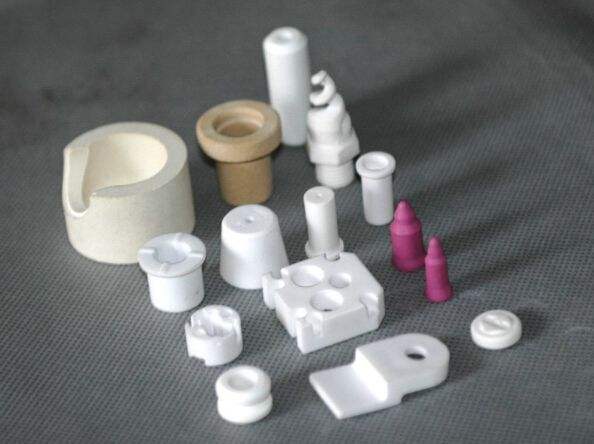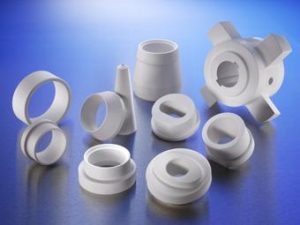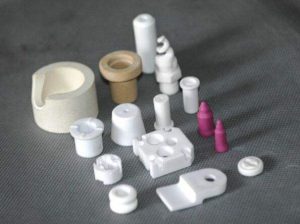- Alumina
- Boron Nitride
- Zirconia
- Other Ceramics
- Applications
- Contact

Aluminum Titanate (ATi / Al2TiO5) is an oxide – ceramic material with fine-grained microstructure and an open porosity. For Aluminum titanate, we use ultra clean synthetic raw materials and through a special reaction sintering a micro-porous material will be originate with an unique property profile:
o Very low wettablility by non-ferrous melts
o Excellent Thermal Shock resistance
o Good Corrosion resistance
o Insulating properties
Aluminum titanate is a new material with low thermal expansion coefficient and high melting point.

Aluminum titanate mainly uses ionic bond and covalent bond as a combination of keys, from the microscopic structure and state of point of view, the internal crystal phase and pores, which determines its low thermal conductivity, slag resistance and alkali resistance, corrosion resistance, wear resistance, high temperature resistance, wide application of alkali resistant and corrosion under harsh environmental conditions, especially the high thermal shock situation.
The combination of thermal and physical properties of Aluminum Titanate – components perform well and have proved successfully in the processing of molten non-ferrous metals. Stanford Advanced Materials manufactures components for the conveying, dosing and controlling of light-metal melts, in particular aluminum. These products permanently secure economic process control, guarantees the constant cleanness of melts and provides for the highest availability of casting plants.

Aluminum titanate is heated at 800 -1300 C, which is easily decomposed into oxides and decomposed at 1100 DEG C. To this end, we usually add various additives, adjust the ratio of raw materials, and control the calcination conditions to improve the above shortcomings.
Aluminum titanate material is widely used in non-ferrous metals, iron and steel, automotive, military, chemical, medical etc.; often used in metal cutting tool, mold, engine parts, cylinder liner, cylinder head, exhaust pipe, exhaust turbocharger volute and turbine blade, turbine rotor and all kinds of insulation materials.
For more information, please visit http://www.samaterials.com/152-ceramic-material
Copyright (c) 1994-2022 China Special Ceramic Parts, Inc. owned by Oceania International LLC, All Rights Reserved.
Leave a message
—
Please send your request to special.ceramic@made-parts.com , and we will reply you within 3 minutes.
